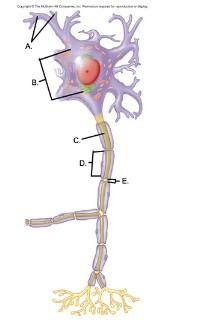A renal clearance test determines the rate at which the kidneys can
A) remove a particular substance from the blood.
B) excrete water.
C) reabsorb ions.
D) add a substance to the blood.
A
You might also like to view...
A graph of an EPSP would plot time against a voltage trace that would resemble
A. a hill where the high point approaches the threshold value. B. a hill where the high point is the farthest away from the threshold value. C. a valley where the low point approaches the threshold value. D. a valley where the low point is the farthest away from the threshold value.
The appendix is typically located in which region(s)?
A) 2 B) 4 C) 1 D) 3 E) 1 & 3
In a sample of distilled water, a water molecule that has picked up an extra hydrogen ion is called a(n)
A. proteinaceous water molecule. B. hydronium ion. C. hydroxide ion. D. amphipathic macromolecule.
 The figure illustrates events at a chemical synapse. What does "B" represent?
The figure illustrates events at a chemical synapse. What does "B" represent?
A. Postsynaptic membrane B. Voltage-gated Ca2+ channel C. Synaptic cleft D. Presynaptic terminal E. Synaptic vesicle